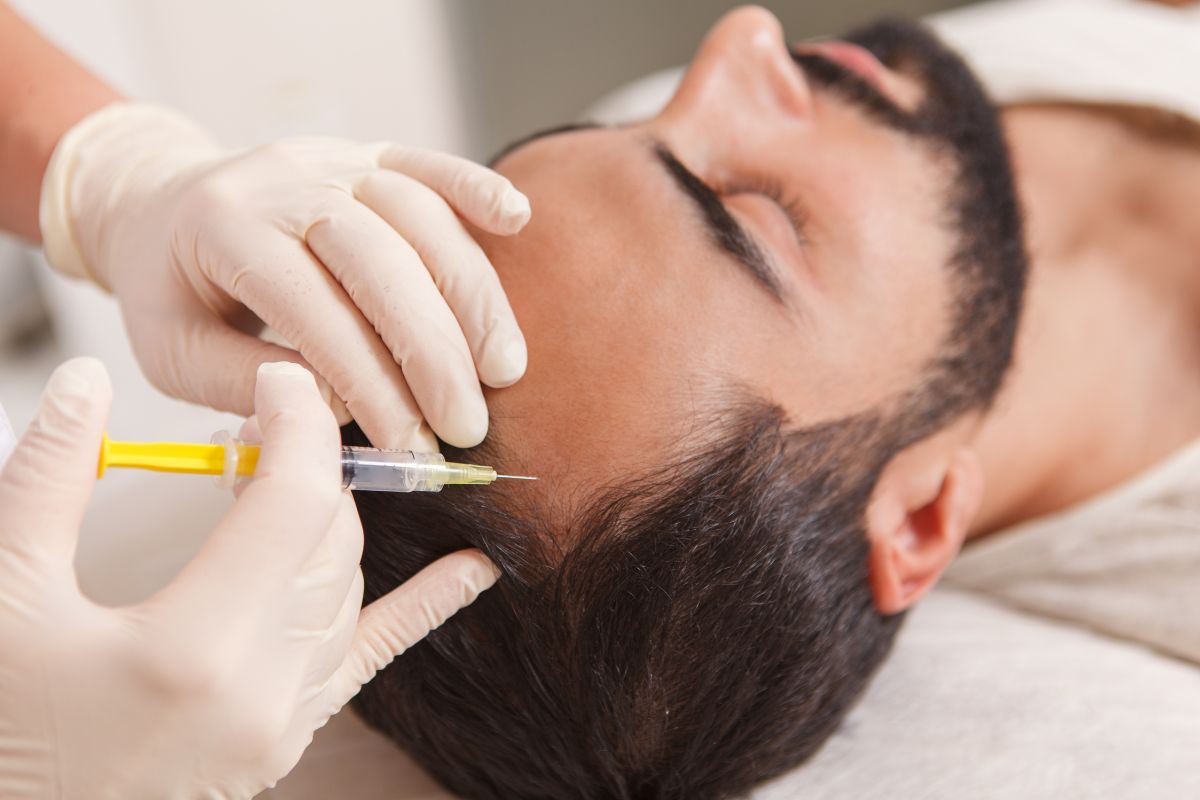About Hair Restoration
Hair loss (alopecia) can be a distressing issue that worsens as we age. It affects both men and women of all racial and ethnic backgrounds. It can lead to low self-esteem, depression, and social isolation.
Male and female pattern hair loss (androgenetic alopecia) is the most common form of hair loss for men and women. It affects 50% of men and 30% of women over 50 years old.
Hair loss may occur due to several reasons including hormonal changes, nutrition, genetics, trauma, underlying health (diabetes, prostate cancer), side effects to medication (contraceptive pills), or can be induced by psychological and environmental factors. In men hormonal factors and genetics are most important. Eighty percent of men inherit male pattern hair loss from their father. In women hormones and genetics are important, but it is more complex, and multiple factors are often involved.
Male pattern hair loss mostly involves the front, temple, and crown areas of the scalp. These gradually enlarge and merge together leaving a rim of hair at the sides and back. Hair often becomes finer, lighter in color, and shorter due to reduced size of the hair follicles.
Female pattern hair loss often starts with diffuse thinning on the top of the head with sparing of the hairline at the front. It can start as early as the teenage years but is more common as women get older. Hair becomes thinner and shorter but does not usually progress to areas of baldness like in men.
Certain conditions like polycystic ovarian syndrome and metabolic syndrome are associated with female pattern hair loss. Oral contraceptive pills containing norethindrone, or recently stopping contraceptive pills after taking them for a long period of time can also cause hair loss. Low iron and vitamin D levels are associated with hair loss and reduced efficacy of treatments. Smoking, UV light and poor nutrition have been found to be associated with hair loss.
Minoxidil and finasteride are effective medications that can be used topically or taken orally. You can start to see improvement with Minoxidil in 6-8 weeks, but it often takes 3-4 months to see results. It stimulates hair growth by increasing the growth phase of the hair cycle. Continued use is essential, or the hair loss will resume, and you may return to pretreatment hair status within a few months.
Finasteride is beneficial for reducing hair loss. It should not be used in women that are pregnant or breastfeeding. Unfortunately, there can be significant side effects that are difficult to control when this medication is used orally. Many patients have found benefit from topical use of finasteride especially when it is combined with minoxidil.
Dutasteride taken orally has been used successfully for both male and female pattern hair loss. It should not be used in women who are pregnant or planning pregnancy in the near future.
Spironolactone is a diuretic that has been shown to be beneficial for female pattern hair loss although the side effects of this medication can limit its usefulness.
Platelet Rich Fibrin (PRF) is a scientifically verified, minimally invasive affordable way to restore your hair density with almost no side effects. The procedure involves injecting your own platelets into your scalp to promote increased blood supply to the hair follicle, increased hair thickness, activation, and maintenance of the growth phase of the hair cycle, and reduced hair shedding. PRF injections can be combined with medications that promote hair growth as well as hair transplant surgery. Generally, patients see reduced hair loss in 1-3 months and increased hair thickness in 2-4 months.
The procedure starts with collecting your blood. The blood is then spun in a centrifuge to separate the platelets suspended in plasma from the red blood cells. This separation produces platelet rich fibrin or PRF. The PRF is then injected into the scalp. There is mild pain with the injection procedure. There is no downtime, and you may resume normal activities afterwards although it is advised to avoid hair dyes for 48 hours. PRF treatments are not a one-time cure. Dr. Fisher recommends 3-4 treatments spaced 4-6 weeks apart. To maintain the effects single treatments are required 1-2 times per year. PRF is not a cure for male and female pattern hair loss however, there is evidence that regular treatments can significantly slow down hair loss and increase hair density and thickness.
Microneedling is a minimally invasive treatment where small needles are used to puncture the skin. These small punctures stimulate the body to release growth factors and increase blood flow to the area which aid in hair growth. Microneedling can be used to deliver medications, platelet rich fibrin (PRF), and exosomes to the hair follicles as they can penetrate the skin through the small channels created during the procedure.
Mesotherapy involves multiple superficial injections of growth factors, medications, exosomes, or platelet rich fibrin into the scalp. This allows the active substances to have a more localized, longer lasting effect. It can improve hair density and thickness while reducing hair shedding.
Celluma low level light therapy or red-light therapy has been shown to be beneficial for hair growth with no side effects. The light penetrates the scalp and stimulates cellular activity leading to tissue repair and regeneration. Dr. Fisher recommends weekly treatments for 8 weeks followed by treatments every 2 weeks for 8 sessions. Maintenance treatments every 3 months is recommended to maintain the effects. Low level light therapy can also be combined with microneedling, mesotherapy or PRF injections.
There are many over the counter products marketed for hair loss, but most are ineffective and have no scientific evidence for their effectiveness. Vitamin D and iron play an important role in hair growth and supplementation is beneficial for patients low in these areas.
Surgical hair restoration can give amazing results but is very costly and is dependent on the quality and quantity of the donor hair. It involves the relocation or transfer of hairs to the area of balding.





